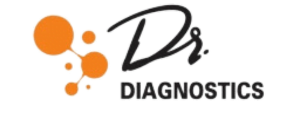- ECHO SCANS
Top Rated ECHO Available
Do you require Echocardiogram(ECHO) in Bangalore? Look no further than Dr. Diagnostics in Bangalore. Our reliable and trustworthy services have earned us a reputation as one of the best providers in the city.
An echocardiogram (echo) is a graphic outline of your heart’s movement. During an echo test, your healthcare uses ultrasound (high-frequency sound waves) from a hand-held wand placed on your chest to take pictures of your heart’s valves and chambers. This helps the provider evaluate the pumping action of your heart.
Providers often combine echo with Doppler ultrasound and color Doppler techniques to evaluate blood flow across heart’s valves.

Benefits of choosing Dr Diagnostics
Smart Reports In 30 Mins
Free Reports Consultation
Most Affordable Pricing
On-time Sample Collection
Who performs an echo test?
A technician called a cardiac sonographer performs echo. They’re trained in performing echo tests and using the most current technology. They’re prepared to work in a variety of settings including hospital rooms and catheterization labs.
What are the different types of echocardiogram?
There are several types of echocardiogram. Each one offers unique benefits in diagnosing and managing heart disease. They include:
When an echocardiogram is used?
An echocardiogram can help diagnose and monitor certain heart conditions. It checks the structure of the heart and surrounding blood vessels, analysing how blood flows through them, and assessing the pumping chambers of the heart.
An echocardiogram can help detect:
- damage from a heart attack – where the supply of blood to the heart was suddenly blocked
- heart failure – where the heart fails to pump enough blood around the body at the right pressure
- congenital heart disease – birth defects that affect the normal workings of the heart
- problems with the heart valves – problems affecting the valves that control the flow of blood within the heart
- cardiomyopathy – where the heart walls become thickened or enlarged
- endocarditis – an infection of the heart valves
An echocardiogram can also help your doctors decide on the best treatment for these conditi
What techniques are used in echocardiography?
Several techniques can be used to create pictures of your heart. The best technique depends on your specific condition and what your provider needs to see. These techniques include:
- Two-dimensional (2D) ultrasound. This approach is used most often. It produces 2D images that appear as “slices” on the computer screen. Traditionally, these slices could be “stacked” to build a 3D structure.
- Three-dimensional (3D) ultrasound. Advances in technology have made 3D imaging more efficient and useful. New 3D techniques show different aspects of your heart, including how well it pumps blood, with greater accuracy. Using 3D also allows your sonographer to see parts of your heart from different angles.
- Doppler ultrasound. This technique shows how fast your blood flows, and also in what direction.
- Color Doppler ultrasound. This technique also shows your blood flow, but it uses different colors to highlight the different directions of flow.
- Strain imaging. This approach shows changes in how your heart muscle moves. It can catch early signs of some heart disease.
- Contrast imaging. Your provider injects a substance called a contrast agent into one of your veins.
- GENERAL QUESTIONS
Frequently asked questions.
Ans: The image thus formed is known as Echocardiogram. This is used to assess any damage associated with the heart tissue or valves like clots, blockage, congenital heart defects, and issues like coronary artery diseases.
Ans: The test lasts approximately 20 – 60 minutes depending on the number of images to be obtained.
Ans: No. You may eat and drink as you normally would on the day of the echo test. You can take all your regular medications on the morning of the test.
Ans: A standard echocardiogram is a simple, painless, safe procedure. There are no side effects from the scan, although the lubricating gel may feel cold and you may experience some minor discomfort when the electrodes are removed from your skin at the end of the test.

